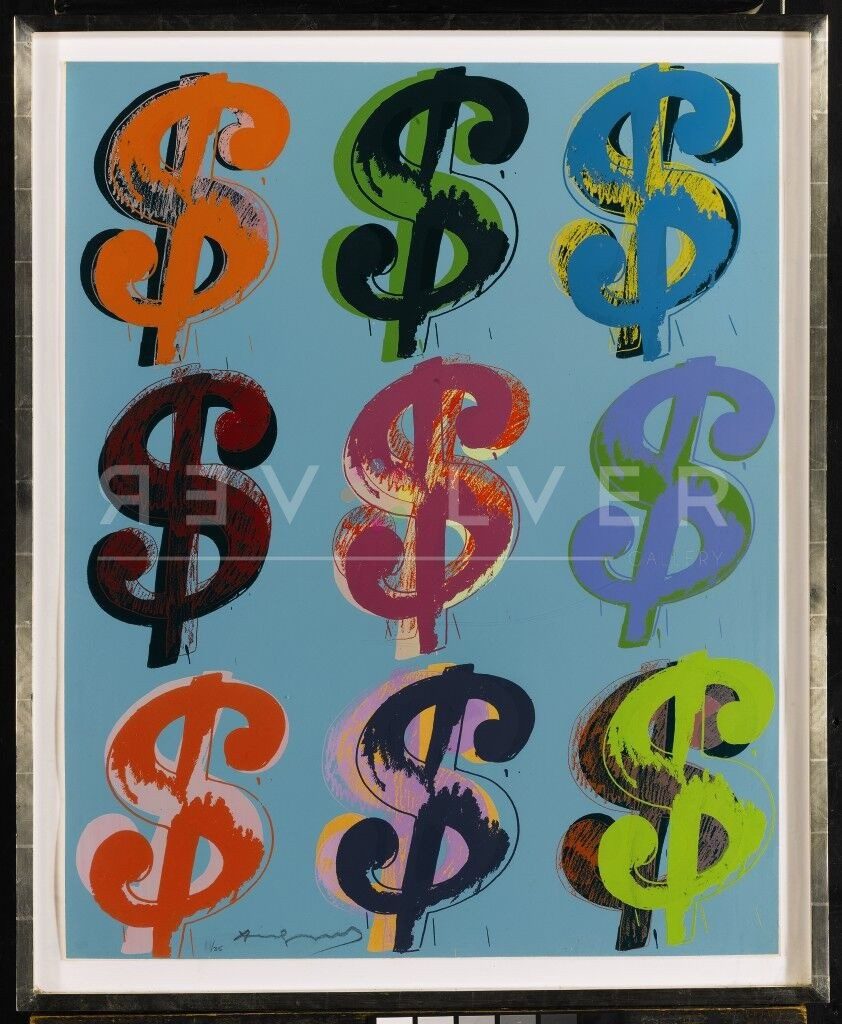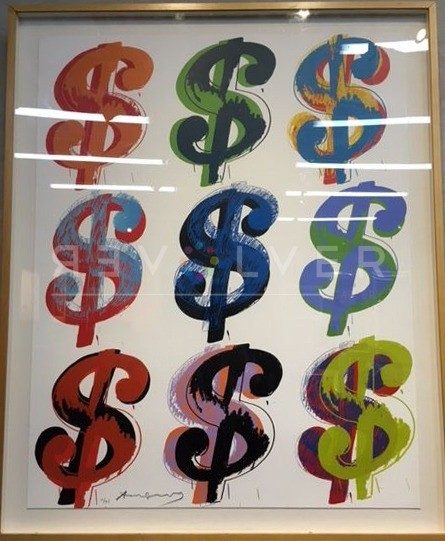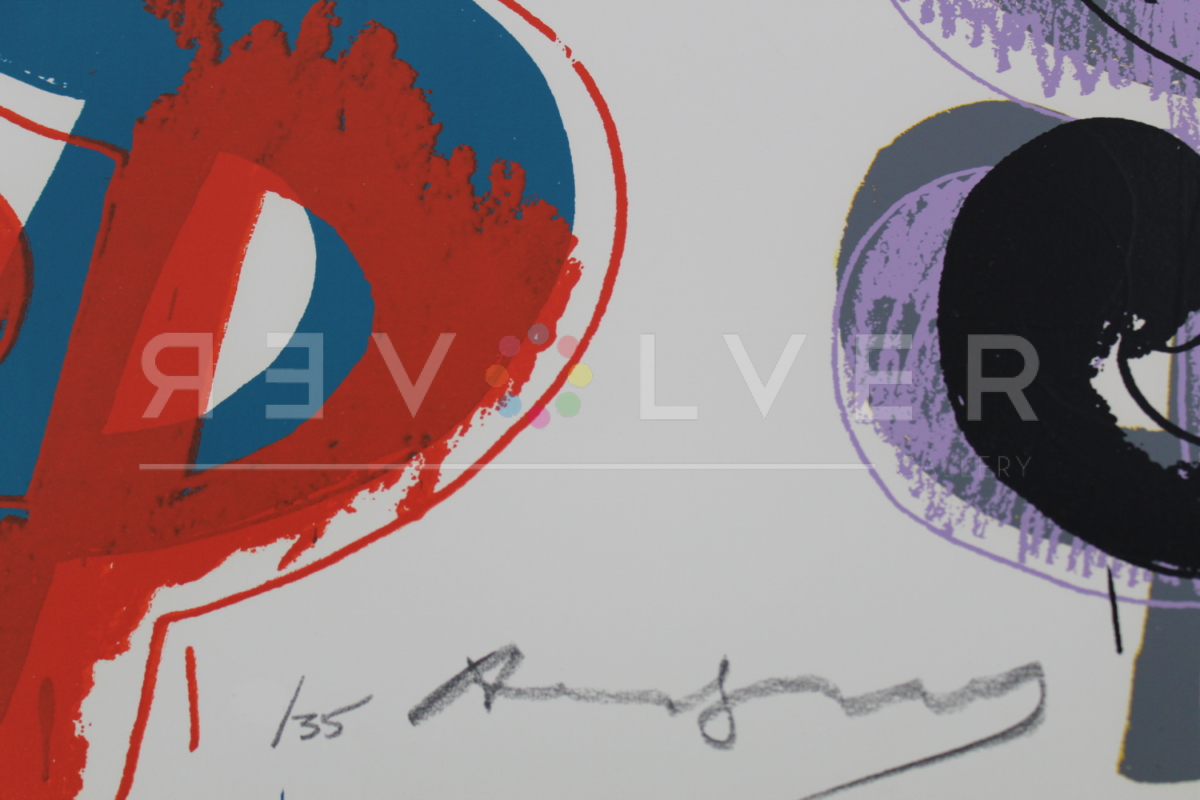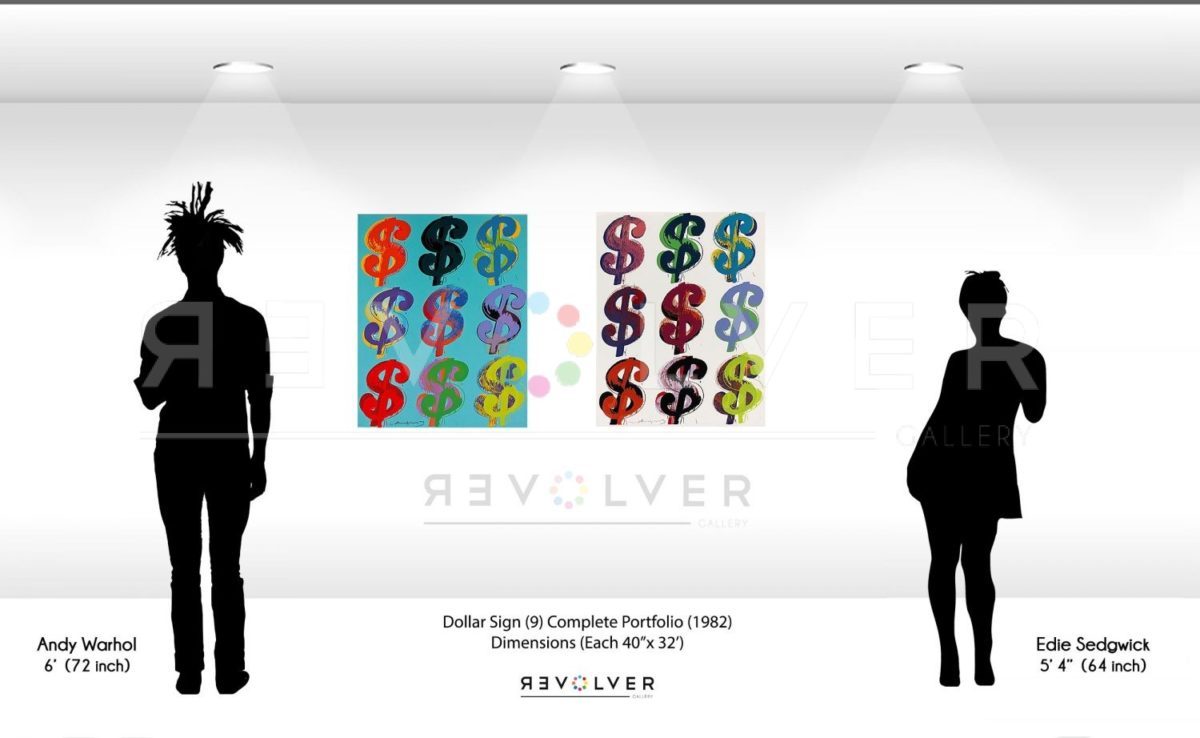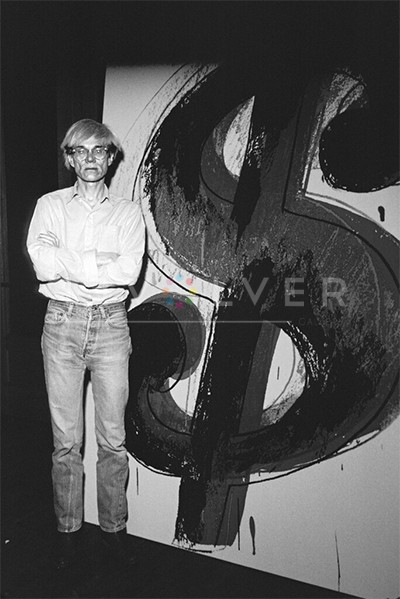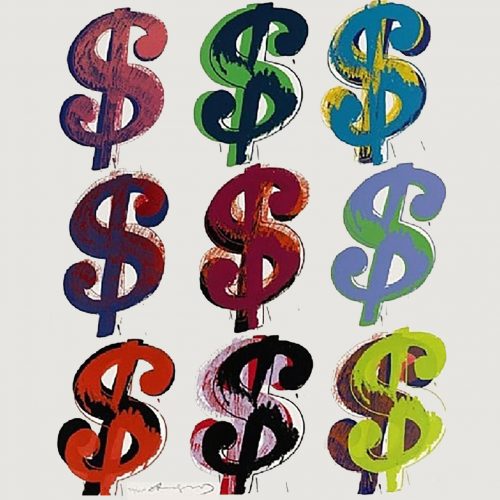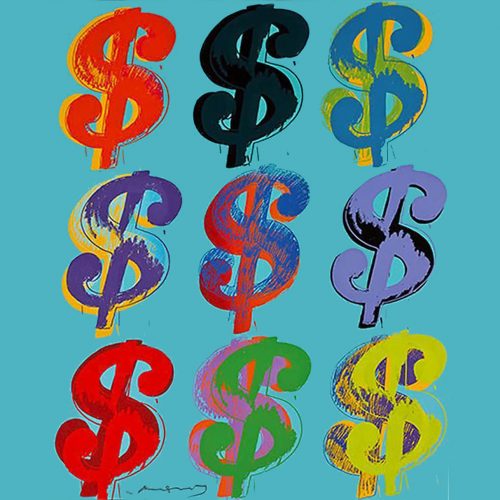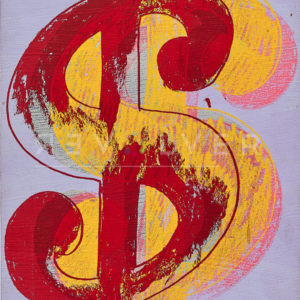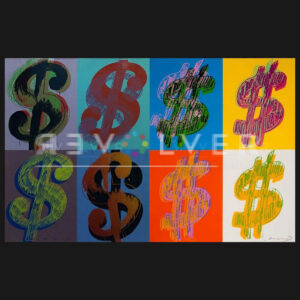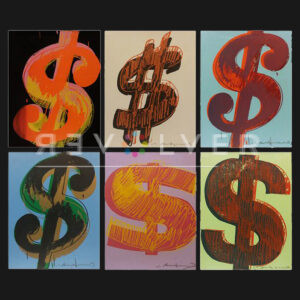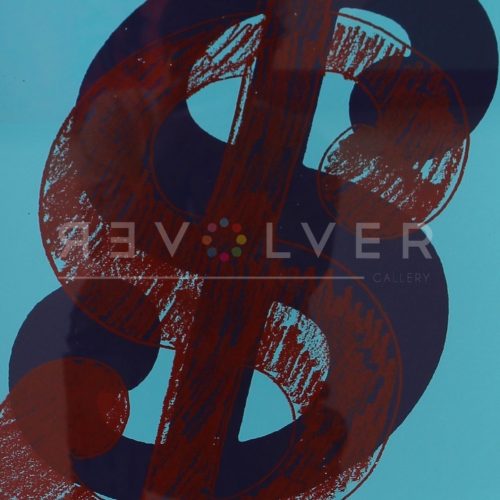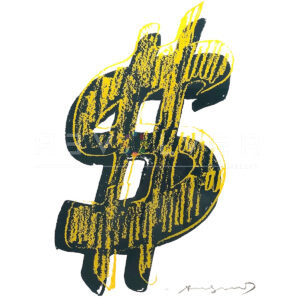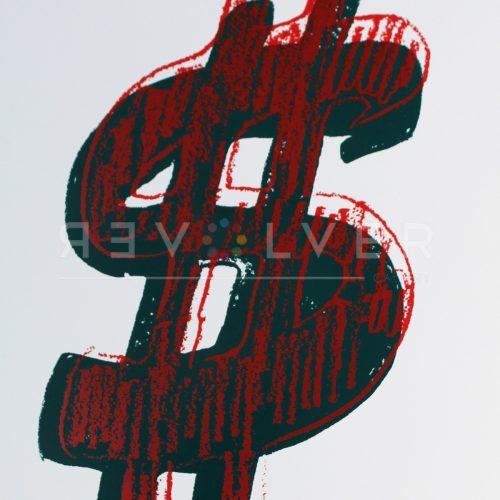The Dollar Sign (9) complete portfolio by Andy Warhol is a Pop Art landmark, ranking amongst the artist’s most popular series. In it, Warhol attempts to peer behind the veil of an everyday symbol to reveal something more about its social meaning. Warhol often made comments about how he did everything for the money, famously saying that “making money is art.” Although these comments were instances of both Warhol’s signature self-deprecation and his triumph over the boundary between the commercial world and the art world, it’s possible that the comments were also a performative commentary on the inherent contradictions of making money as an artist.
Each of the prints in the Dollar Sign (9) complete portfolio consist of 9 dollar signs in different colors, sourced from an original image taken by Warhol. Although Warhol put particular capital on his image as someone who created art through the process of reconceptualizing readymade objects and images, he increasingly used his own photography for the basis of his work in the 1970s and 1980s. The Dollar Sign (9) complete portfolio utilizes Warhol’s innovative screen-printing techniques to powerful effect, changing the way we see the dollar sign forever.
Warhol used a wide variety of primary color paint combinations with faded and scratchy shading to create the dollar signs in this work. Whereas the bright, animated quality of Dollar Sign suggests the comic strip—a prominent pop art motif—the shading almost makes the series feel like it was made on the back of a drugstore receipt. The Dollar Sign (9) portfolio includes F.S. II.285 and 286, which feature a light blue background and a white background respectively. Both correspond to the differing color palettes of the dollar signs in a way that is quite visually arresting.
Many have accused Warhol of being a sellout; and even worse, of his work not revealing anything about our society! The 1982 Dollar Sign (9) complete portfolio provides a witty rebuttal to this claim. It makes clear Warhol’s keen ability to call into question what “being a sellout” in a world of mass-produced art even means. The critics themselves seriously underestimated the impact of the critique.
In retrospect, it is easy to observe how well the currency of this cultural criticism has carried over into the 21st century, where “avant-garde” artists partner with corporations to produce products for mass consumption, while at the same time, more “traditional” artists are forced to increasingly pander and dilute their work in order to please a shrinking, more demanding audience. Even emojis (including the various money emojis) have gone through a kind of Warholian transformation, in which their packaging into a particular commercial format resulted in new meanings as well as new ambiguities, leading to all kinds of creative confusion that Warhol surely would have appreciated.
Ultimately, the Dollar Sign (9) complete portfolio is Warhol at his most intellectually nimble and self-aware, while he simultaneously and unapologetically expresses his life-long love affair with money.
Dollar Sign (9) as Part of Andy Warhol’s Larger Body of Work
The Dollar Sign series from 1982 was the ultimate manifestation of Andy Warhol’s love affair with money. Warhol once said, “I like money on the wall,” and the series was his way of using his iconic imagery to achieve just that. The Dollar Sign paintings contain a source image that was created by Warhol himself, an uncommon practice for Warhol, setting it apart from the rest of his body of work. The Dollar Sign series is a superb example of Warhol seizing a internationally recognizable symbol and altering it into something that is purely Warholian.
Photo credit: Andy Warhol with Dollar Sign painting, New York, 1982. Image: © Santi Visalli, Artwork: © 2022 The Andy Warhol Foundation for the Visual Arts, Inc. / Licensed by DACS, London

